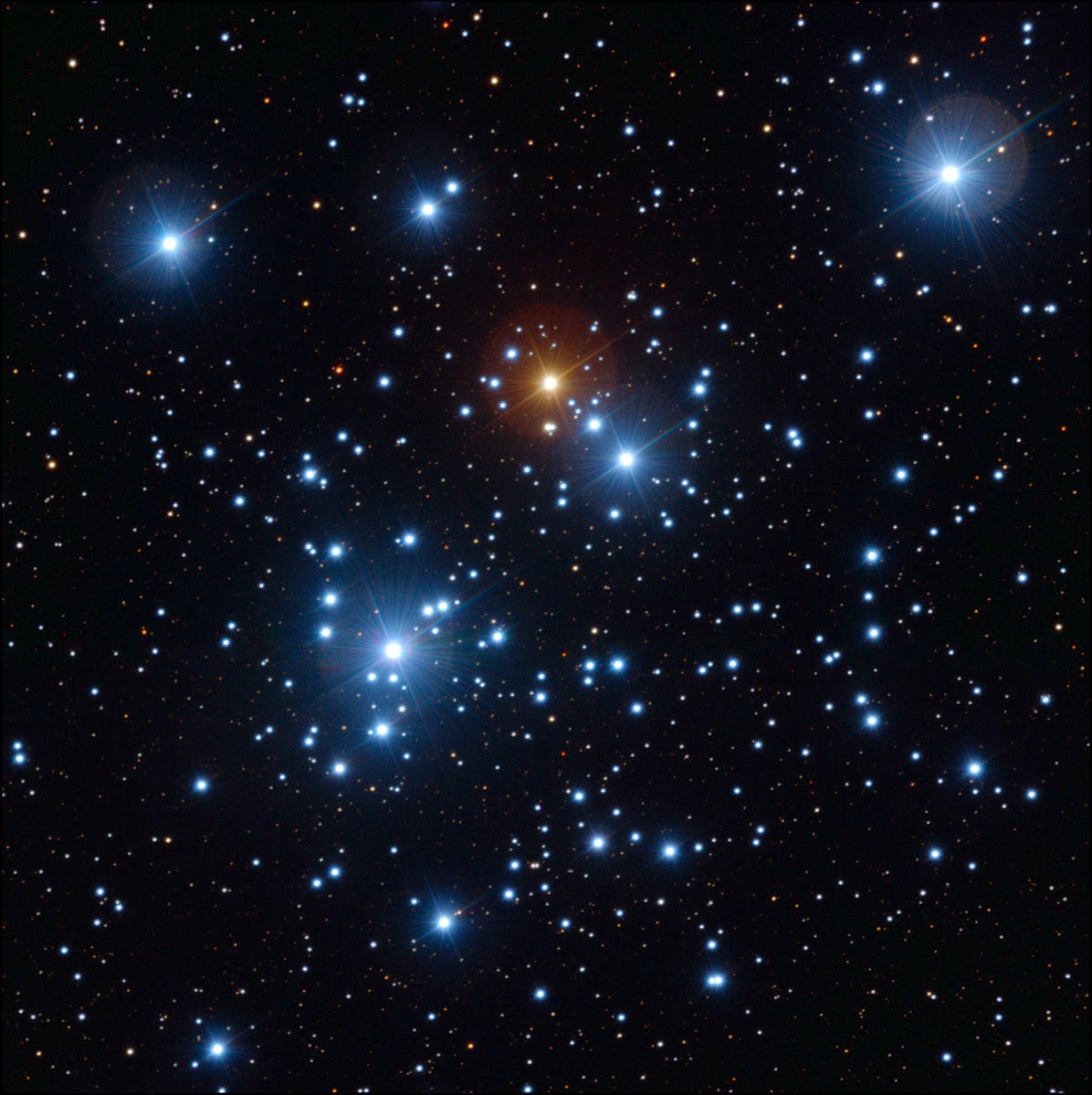
One of the gems of the night, the Jewel Box Cluster (NGC 4755) appears to dangle from the eastern arm of the Southern Cross like a pearl earring. Early explorers first saw it as a 4th-magnitude star, leading Johann Bayer to label it in his 1603 Uranometria catalog as Kappa (κ) Crucis. Its identity remained singular until Abbé Nicolas Louis de Lacaille used a ½-inch telescope to resolve it into half a dozen stars during his 1751–1753 exploration of the southern skies from the Cape of Good Hope. Its “Jewel Box” moniker derives from a description by John Herschel who called it a “casket of variously coloured precious stones.”
Today all one needs is a binoculars or a small telescope to see the cluster’s sapphire and ruby gems set against the black marble of dust in the Coalsack Nebula (see #89). This intervening dust makes the cluster’s distance difficult to determine, while a mysterious mix of youthful blue stars and aged red supergiants makes its evolutionary age uncertain. Conservative estimates, however, place the cluster some 6,400 light-years distant, with an age somewhere between 7 million and 16 million years.
Most backyard telescopes will reveal only a fraction of its 100-plus brightest members, which are crammed into an area only 10′ across. Through a telescope, the cluster appears to have two groups: one bright, one faint. Is the Jewel Box a melding of two star clusters or a visual line-of-sight oddity?









